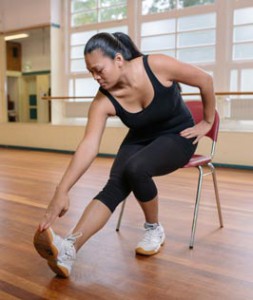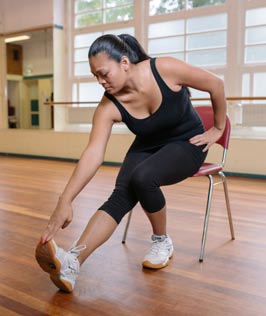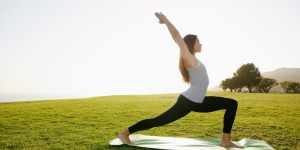High intensity interval training, also known as HIIT, is a fairly new workout trend that may just stick around for a while. HIIT is a type of training of repeated bouts of high intensity effort followed by less intense activity and varied recovery times. As an athlete, I have always favored strength training over cardio. When I think of cardio my mind immediately goes to the treadmill, bike, or even worse… the stair master. However, HIIT may give you “ more bang for your buck”. Using HIIT you can combine cardio and strength training based off your experience and individual goals. You can even combine plyometrics (jumping), yoga, body-weight training, and stretching.
You may be asking yourself why you should choose HITT over your current exercise method. This type of training has shown to have many benefits, including burning more calories and a greater amount of fat. After completing a HIIT exercise, while your body is recovering, it can still continue to burn more calories/fat up to 24 hours after. American College of Sports Medicine studies have shown that 2 weeks of HIIT improves aerobic capacity as much as 6 to 8 weeks of endurance training (ACSM, 2014).
It is very important to know that HIIT can have dangerous effects if not performed correctly. Potential injuries can occur in joints, such as the hips, knees, and ankle. There is also a risk of cardiovascular complications. If you chose a HIIT exercise with multi-joint complex movements, proper technique is crucial. Finding a qualified trainer with proper certification and knowledge about HIIT is advised for beginners wanting to start this training.
With that being said, HIIT is a great way for one to get in a good workout. Having a busy life, HIIT is ideal for me, and it might be for you too. With a busy schedule, it can be hard to find time to schedule in a workout. It can require a longer amount of time jogging on the treadmill to reap the same benefits as a shorter bout of interval training. That’s why it is so easy to find time to practice HIIT. HIIT also does not require any equipment. It can be as simple as speed walking for 20 seconds and walking slowly for 40 seconds. It is a pretty physically demanding type of exercise, but it can be modified based off your fitness level. If you want to change up your current workout and are physically ready to try a high-intensity, here is a sample HIIT workout:
| HIIT WORKOUT GUIDE | ||
| LEVEL 1: 15-20 MINUTES | LEVEL 2: 1-8-22 MINUTES | LEVEL 3: 10-25 MINUTES |
| 40 SECONDS REST BETWEEN EACH | 30 SECONDS REST BETWEEN EACH | 30 SECONDS REST BETWEEN EACH |
| 20 X SQUATS (AT A FAST TEMPO) | 20 X SQUATS | 20 X PRISONER SQUAT JUMPS (HANDS PLACED BEHIND THE HEAD AS YOU JUMP) |
| 20 X LUNGES EACH LEG (AT A FAST TEMPO) | 20 X LUNGES JUMPS EACH LEG | 30 X LUNGES JUMPS EACH LEG |
| 10 X STEP OUT BURPEES (STEPPING BACK/FORWARD INSTEAD OF JUMPING) | 15 X BURPEES | 20 X CHEST TO GROUND BURPEES |
| 10 X PUSH UPS ON KNEES (AT A FAST TEMPO) | 10 X PUSH UPS ON FEET (AT A FAST TEMPO) | 10 X CLAPPING PUSH UPS ON FEET |
| 20 X MOUNTAIN CLIMBERS EACH SIDE | 30 X MOUNTAIN CLIMBERS EACH SIDE | 40 X MOUNTAIN CLIMBERS EACH SIDE |
| 40 X STEPS OF HIGH KNEES RUNNING | 15 X TUCK JUMPS | 20 X TUCK JUMPS |
| 3 X 50M SPRINTS AND WALK BACK | 4 X 50M SPRINTS AND WALK BACK | 5 X 50M HILL SPRINTS AND WALK BACK |
| HIIT IT X 1-2 A WEEK | HIIT IT X 2-3 A WEEK | HIIT IT X3-4 A WEEK |




